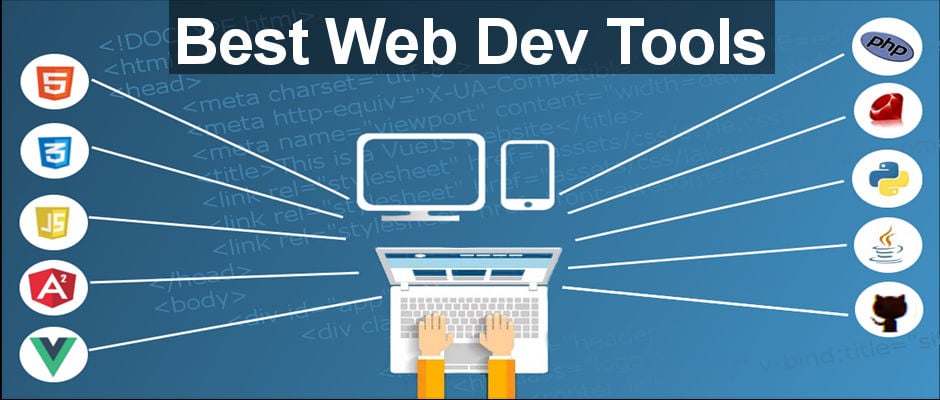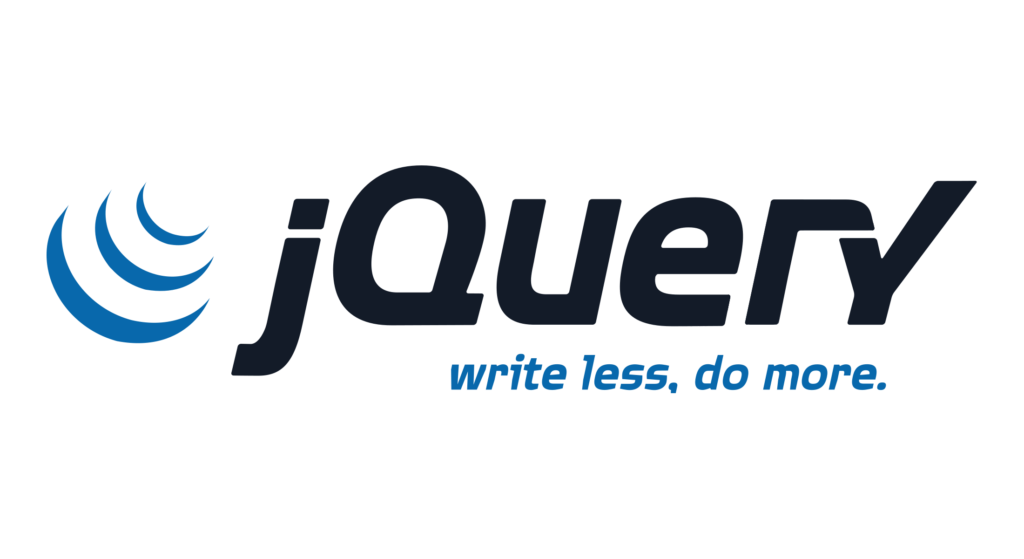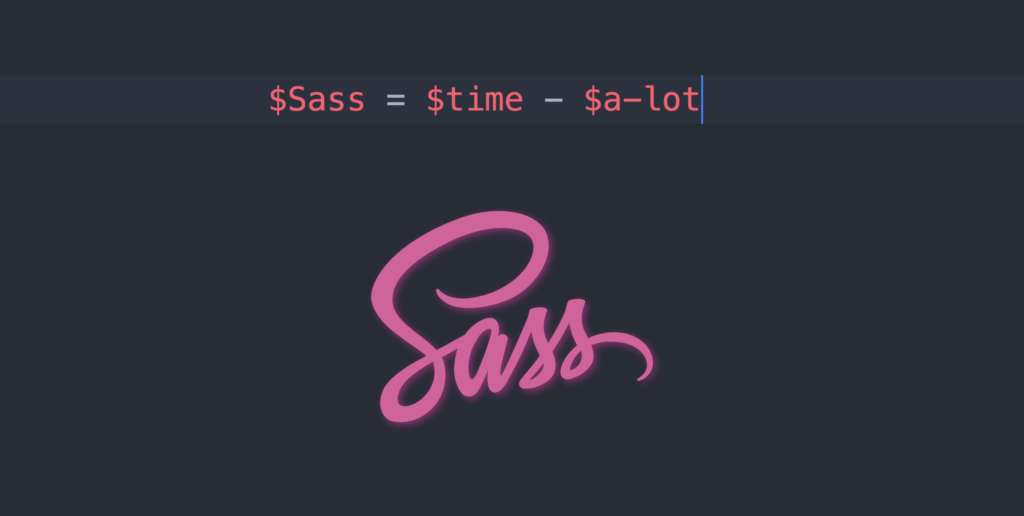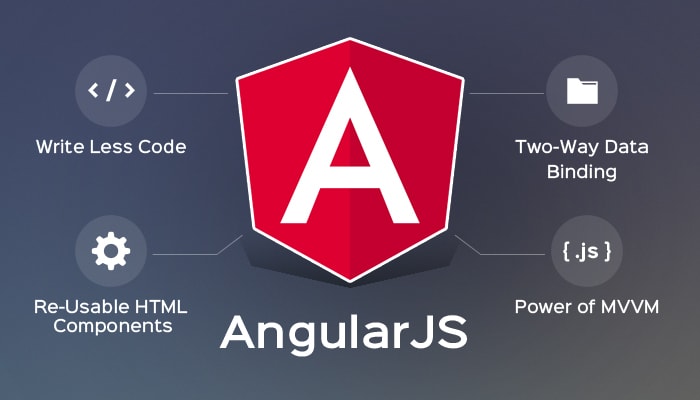Web developers rely on tools to improve efficiency and productivity when working on projects. As demands and expectations rise, so do the choices of toolkits available to both budding and advanced developers.
Top web development tools developers use today.
1. jQuery
Introduced in 2006, jQuery is a cross-platform JavaScript library that’s compact and quick. This invaluable tool makes it easy for developers to add plug-ins, animations, build forms and more. It’s a simple way to control interactions between JavaScript and HTML.
It’s arguably one of the most commonly used tools in web development. jQuery is:
- Cross-browser. It’s supported by Firefox, Chrome, IE, Edge, Android, iOS, Safari and more.CSS3 compliant. Along with CSS3 selectors, jQuery also supports style property
- When minified and gzipped, jQuery is just 30kB.
- Developers use jQuery because it simplifies the development process and saves time.
jQuery is the most popular JavaScript library ever created, and it’s installed on the vast majority of the top million most visited sites on the Internet.
2. GitHub
Even seasoned web developers make mistakes, and that’s where version control systems come into play. GitHub is a code hosting platform that offers version control and allows for easy collaboration among developers.
But at its heart, the platform is really designed to act like a filing system for all document drafts. Developers copy their repositories to own systems, make changes locally, and then check in these updates to the central server.
GitHub is more than just a Git repository hosting service – it also has unique features. Along with a graphical interface, the platform offers collaboration and access control options, including task management tools, bug tracking and wikis for each project.
What makes GitHub such a powerful tool for developers is the collaboration features. Repositories can be copied, changed and then shared with the developer. The changes can be reviewed and even accepted and merged.
Also Read: Top 5 Apps to Spy Your Phone Without Having Your Device
3. Sass
Sass, which stands for Syntactically Awesome Style Sheets, is an open-source project that pioneered the CSS preprocessor genre. Learning curve aside, this tool saves developers a great deal of time.
Sass uses nesting, variables, inline imports and more to produce simple CSS that’s easy to read and follows the DRY (Don’t Repeat Yourself) principle. It also helps keep things organized and helps developers create stylesheets quicker and more efficiently.
With Sass, parent-child relationships can be grouped into classes with just a few lines of code. Sass does all of the hard work for you, allowing your productivity to improve.
Along with being able to nest selectors using less code, developers can also import code snippets to fix CSS issues that may be affecting their UI.
For front-end developers, Sass is a tool that will save you time and take the pain out of styling.
4. Angular
The cross-platform framework helps developers create apps for mobile web, web, native desktop and native mobile devices.
The open-source framework extends HTML syntax to save developers time while improving readability. With the help of Angular, developers can create more robust web apps more quickly and easily.
The potential for two-way data binding is also beneficial for developers.
Angular also uses POJO, so there’s no need for other getter and setter functions. It supports Single-Page Application features, making it easy to create and manage online forms. The platform includes a testing unit to simplify the testing process, which is critical in web development.
Another benefit of Angular is its easy integration with other libraries. Developers can also take advantage of the directory of filters available, including: Currency, Number, Date, Orderby, Uppercase and more.
Many organizations use the Angular framework to develop their applications, including Netflix, PayPal, Freelancer, jetBlue, The Guardian, Upwork, The Weather Channel and more. The framework is part of the MEAN stack.
Angular has a strong community of developers, which makes it easier to learn and discuss the framework. Additionally, there are several third-party tools available to help streamline development.
Still, Angular does have its drawbacks. There is a steep learning curve, which can be a major deterrent for some developers. Developers are also required to learn RxJS in order to use Angular.
Read More: How to Enable VoWiFi in OnePlus 7T and Other Devices?
5. Django
Django is a Python framework that streamlines development and encourages practical software design. The framework has a reputation for being one of the most secure out there because it’s so quick to respond to vulnerabilities.
For developers, one major benefit of Django is that it has a very active community that regularly contributes utilities and packages.
Documentation is excellent, which is another major benefit for developers. One of the main goals of the Django framework is to streamline and simplify the development process. It includes everything a developer needs to build a full application right out of the box.
Because all of the essentials are already available, building simple apps is quick and easy. For more complex apps, there are thousands of packages available for Django, including those for testing and debugging.
Django is suitable for a wide range of projects, whether it’s a simple project or a more complex application. The framework is cross-platform, so you can build applications that run on any operating system. It’s also compatible with most major databases.
For efficiency, Django follows both the DRY and KISS (Keep it Short and Simple) principles. Developers can use data normalization and abstractions to avoid redundancy. Having the ability to reuse code also makes it easier for developers to focus on other more important things, like coding the app’s unique features.
In addition to all of these advantages, Django also offers its REST (Representational State Transfer) framework.
Django has been around for more than a decade, and it is the framework of choice for some of the biggest web applications out there, like Instagram, Disqus, Spotify and even NASA.
6. MeteorJS
MeteorJS is a free and open-source JavaScript framework that can run on both the client and server side.
Another great advantage of this framework is that developers can use the same code no matter whether they’re building apps for mobile, desktop or web.
Meteor has a lot to offer, but it also easily integrates with hundreds of other solutions. The framework has a large community that helps maintain the framework’s large collection of extensions. Smart packages are also available, which can save a great deal of development time. There are more than 14,000 packages available.
Another advantage of Meteor is that it can integrate with JavaScript libraries, including Bootstrap and React.
7. ASP.NET
ASP.NET is an open-source framework for web app development with C# and .NET. It was developed by Microsoft and was released in 2002. Although the framework has changed since its launch, it remains as one of the most popular tools for web developers.
Using ASP.NET, developers can build full stack apps using JavaScript, HTML, C# and CSS. REST APIs can also be developed for mobile devices, browsers and other clients. Developers can also create microservices that are deployable independently and run on Docker containers.
ASP.NET has an advantage over other popular web frameworks because of its superior speed. The framework also supports authentication protocols, including multi-factor and external authentication with Twitter, Google and others.
8. Chrome Developer Tools
Although more limited than other web developer tools, Chrome Developer Tools is helpful for debugging and editing HTML and CSS in real-time. A series of network tools are also available that allow you to optimize loading flows. Developers can get an inside look at what the browser is doing every step of the way, which can help them get a better understanding of how browsers work.
These tools are available for both Chrome and Safari. Most developers already have this tool and it’s free to use.
That being said, having the ability to tweak HTML and CSS right from your browser in real-time offers many advantages and is highly convenient.
These eight web developer tools are some of the top tools available today. They help streamline the development process while improving organization and boosting productivity.





